Ready to take your garden from meh to marvellous? This expert guide will help you budget
* Prices correct as of November 2022
Professional advice from: Julia Cody of Hamilton Cody Garden Design; Phil Hirst of Phil Hirst Garden Design; and Roberto Silva of Silva Landscapes
Beginning your garden project? Read How to Start a Garden Redesign
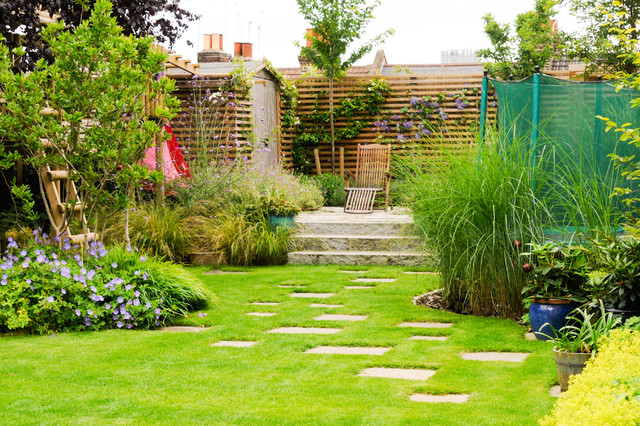
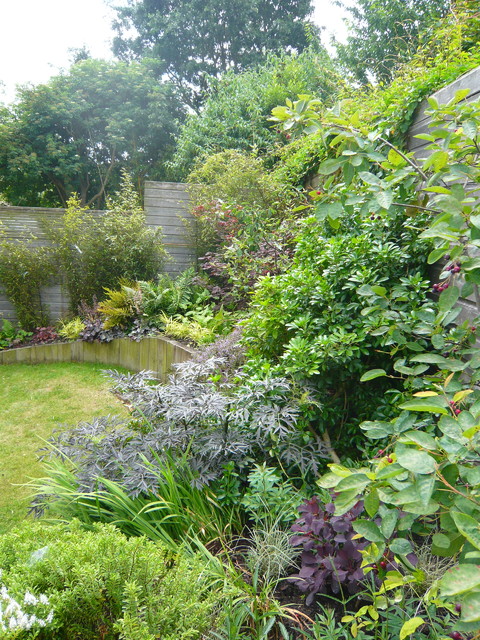 Silva Landscapes
Silva Landscapes“For smaller projects, the designer’s fee often represents a higher proportion of the overall project budget, because the work involved doesn’t diminish,” Phil says. “For example, a previous small, new-build, level garden cost around £20,000, which included paving, lawn, planting, a simple water feature and lighting. The design fees were around 14% of the total budget. A large garden with changes in level, structures, extensive paving, planting, lawn and lighting cost about £80,000 and the fees were around 9% of the budget.”
However, Roberto says that larger jobs can involve lots of client meetings with unpredictable site visits. If this is the case, “the initial process can be charged as a small garden and then carry on by the hour as the job progresses. It can always be changed to a percentage cost later if the client finds it’s too expensive by the hour,” he says.
Ready to hire? Find local garden designers, see examples of their completed projects and read reviews from previous clients.
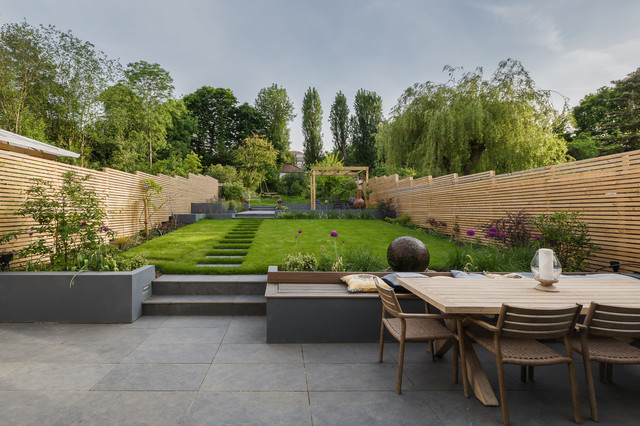
Fees for a well-known designer with a strong reputation will be more than for a newly qualified designer. Location will also be a factor, with fees and build costs likely to be higher in the South-east than in the North.
“Remodelling a garden is often a big investment similar to having a major refurbishment inside a house,” Phil says. “Many similar skills and trades are involved, such as construction of foundations, walls and hard surfaces, electrical installation, plumbing for water features and irrigation, and drainage. And the cost of materials can actually be higher, because they have to withstand external conditions.”
Phil has a top tip for saving on the cost of design fees. “Do some research beforehand,” he advises, “and perhaps create an Ideabook on Houzz. It will give the designer something to work from and could save his or her time in the long run.”
More: Where to Save Money on a Garden Renovation
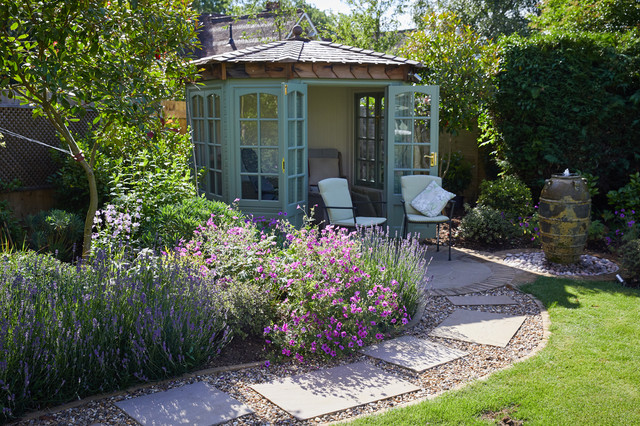 Green Tree Garden Design Ltd
Green Tree Garden Design LtdThere are various professionals involved in putting together a new garden, so be clear you understand the differences between them, say our experts.
“A garden designer is a design specialist, but is not the person who will build the garden,” Julia says. “They often have a garden design qualification, but not necessarily.
“A landscaper is a landscape contractor who will build a garden and will usually want a plan on paper to work to. A landscape architect generally deals with public spaces and will have a landscape architecture degree or MA. They don’t usually design domestic gardens.”
To complicate matters, some landscape contractors offer a ‘design and build’ service and will include the design as part of the fee. “They can be good value for money if you can find the right contractor,” Julia says.
Look for membership of a professional association, such as the Society of Garden Designers (sgd.org.uk), Phil adds.
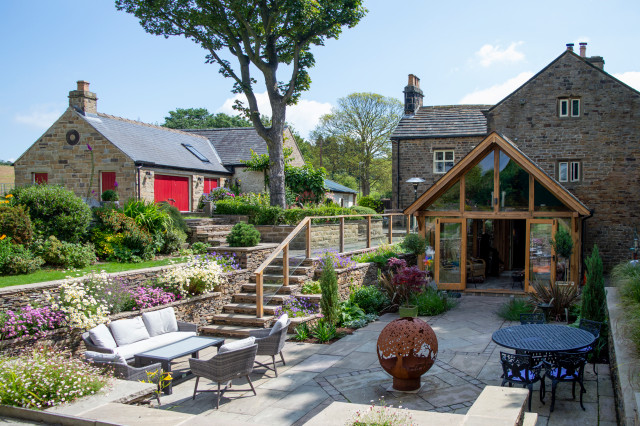
A garden redesign generally breaks down into five main stages: initial consultation, survey, design (concept and masterplan), construction and planting.
Costs will vary enormously, based not only on the size of garden, but on the extent of the input from the garden designer, who does the designing, and the landscape contractor, who does the building, plus any other potential specialists, such as surveyors and structural engineers, on larger or more complex projects,
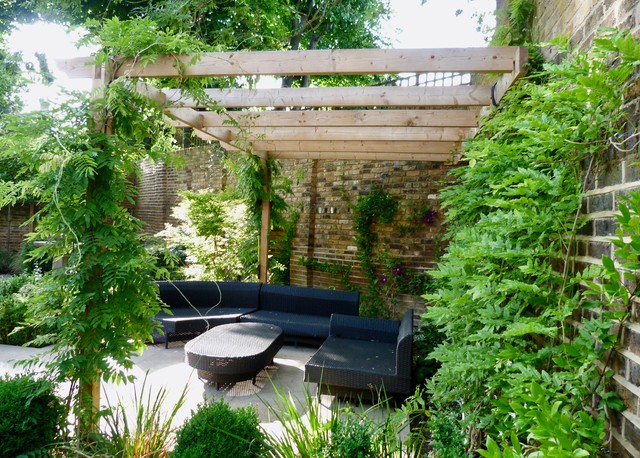 Pippa Schofield Garden Design
Pippa Schofield Garden Design1. The initial consultation
“We usually visit a new client for free and run through our design process with them,” Julia says. “By the time we’ve had an initial meeting, we’ll have a sense of the scale of the project and an approximate build price in mind.”
“Some designers make a charge for [the initial consultation] based on the amount of time they expect it to take and their hourly rate,” Phil says. “Others may not charge for this visit. However, if a designer is travelling a long distance, you should expect to pay for travel expenses, and a good designer will advise you of this when arranging the meeting.”
“I usually refund the amount [for the consultancy visit] if the client goes ahead with the project, or use it as a deposit,” Roberto says.
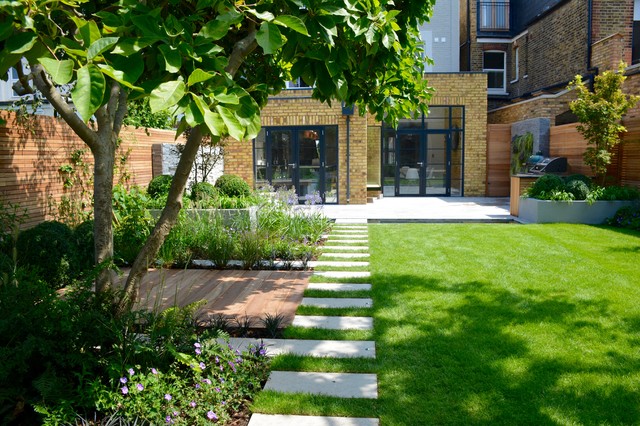
“We usually do the survey ourselves,” Julia says. “We find we get to know the space and start the design process then. If a project is large, we’ll engage a professional surveyor. We’ll measure and record every feature of the existing garden.”
“Even if a professional surveyor is being used,” Phil says, “the designer will probably want to spend time in the garden gathering information about the site and soil conditions and taking photographs, which wouldn’t be provided on the surveyor’s report.”
The basic work (surveys, concept proposals and masterplan) can cost from around £800 for a small space, Roberto says, “around £1,500 to £2,500 for a medium garden, and upwards of £2,500 for a larger plot.”
To see more from any of the designers whose photos are featured in this article, click on the image, then on Learn More if you’re in the app, and follow the links to the professional’s profile.
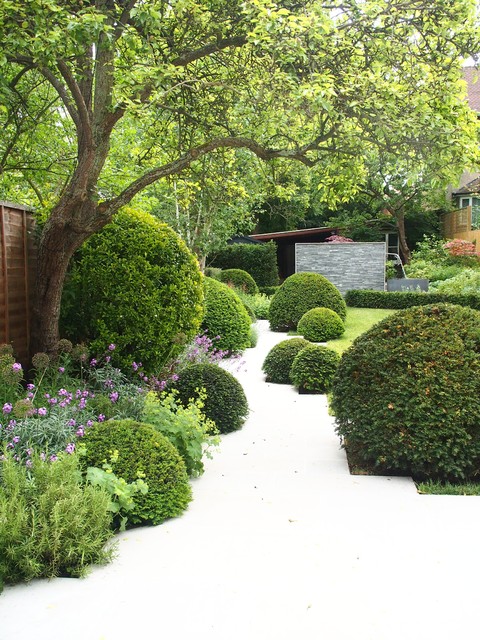 London Garden Designer
London Garden Designer“The concept stage will typically account for between 25% and 50% of a designer’s overall fee,” Phil says.
He explains that this stage can be the most time-consuming for designers, as they consider different potential layouts and what will work best for the client. “The designer is using their creative and technical skills to propose a solution that will work,” he says. “There will usually be at least one meeting with the clients and possibly more where there are amendments to initial designs.”
“I usually put together two or three design concept proposals for the client to choose from,” Roberto says. “The one that’s chosen will then be developed into the masterplan.”
“Designing takes time,” Julia says. “It’s often like a 3D puzzle that needs solving. We spend time working out different layouts and building one or two in a simple 3D form to check how it will feel on the ground.”
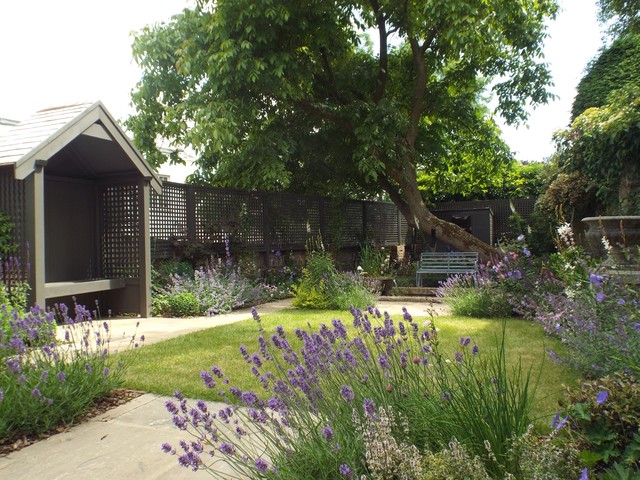
You should expect to allocate between 20% and 40% of the overall fee for the masterplan stage, Phil explains.
The masterplan is a refined version of the concept plan. It’s the drawing that’s the basis for any future design work, such as the planting plan, construction plan and design detailing.
“If the masterplan is simple, then the client can build the garden with that document, plus the specification,” Roberto explains. “If it’s more complex, further detailing will be required.”
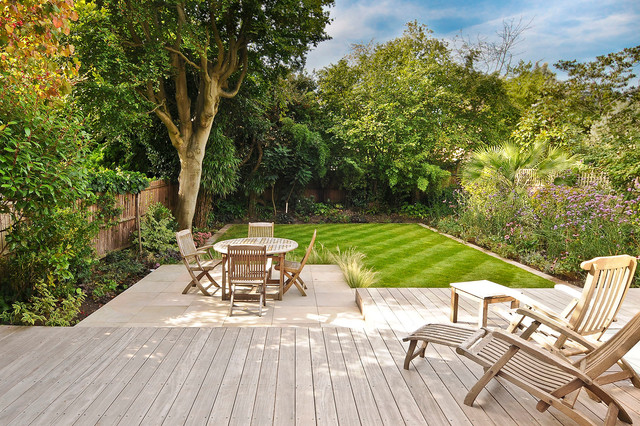 Kate Eyre Garden Design
Kate Eyre Garden DesignOnce a masterplan or construction package has been completed, a contractor will need to be brought in to build the garden and put in place any hard landscaping. “At this point, the client will be able to put the project out to tender with a number of chosen landscape contractors to get comparable quotes for the garden build,” Julia says.
Some designers will offer to help their clients find a contractor. “This could be informally by recommending trusted contractors,” Phil says, “or through a more formal tender exercise. Where the latter is the case, the client should expect to pay for the designer’s time in preparing documentation and administering the tender process. A tender exercise would typically account for 5% to 10% of the designer’s overall fee.”

It’s important to establish with your designer who will do the planting and whether there will be additional costs. Actually putting the plants in the soil is often not done by the designer – they will create the planting plan and, in some cases, position the plants. In some cases, however, they prefer to do the planting themselves. “It’s often only when the plants are on site that final decisions are made about exact positioning to ensure the best effect,” Phil says.
“Normally, the landscape contractor will plant the garden and we include the planting in our construction specification,” says Julia, who provides a technical planting plan and an image sheet to go with it. “We’ll set out the plants before they’re planted. Occasionally the client will want to plant the garden themselves. In this case, we’ll still set out the plants for them. We don’t plant ourselves, though we may move existing plants around and prune existing shrubs if necessary.”
“The designer will create a planting scheme that will [not only] look beautiful but – taking account of the site conditions – will also thrive,” Phil adds. “He or she will also be considering the maintenance requirements of the plants to ensure they fit with the client’s brief.” He says the planting plans take up 15% to 25% of the overall budget.
Roberto offers planting plans that can include a sketch proposal, strategy, main plan, schedule and layout, depending on the size of the project and individual client requirements.
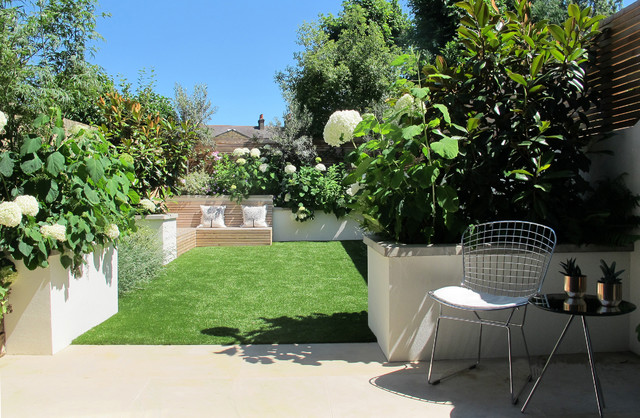 The London Gardener Ltd
The London Gardener LtdMany designers will visit the site while the garden is being built to ensure construction is going to plan and any unforeseen problems that arise can be properly addressed.
“This may also include certifying the contractor’s invoices for payment by the client,” Phil says. “Designers often charge for this service on a per visit basis, based on their hourly rate.”






It’s important to remember that design fees are a portion of the total cost of the project. “Clients should expect to pay between 8% and 20% of the overall project budget for design,” Phil Hirst says.
“Design fees for a small garden range from £2,000 to £4,500,” Julia Cody says, but explains it’s harder to give an average price for larger gardens. “We have a large project we’ve been working on for a number of years and each section of it is like a small or medium-sized garden,” she says.
Roberto Silva would cost a plot of 3 x 5m or 4 x 5m at around £1,140. “This would cover the basic design work and include a plant list if the designer is supplying and placing the plants,” he says.
He breaks down the price using an hourly rate of £95: two hours for the survey and site analysis (£190); two hours drawing up (£190); four hours for concept plans (£380), and four hours for masterplan and specification (£380).
“Designers calculate their overall fees in different ways,” Phil says. “In some cases, they’ll base this on the overall expected budget for the garden, charging a percentage of the cost for design. Others base their fees on the amount of time they expect to spend on the design work and their hourly rate.”